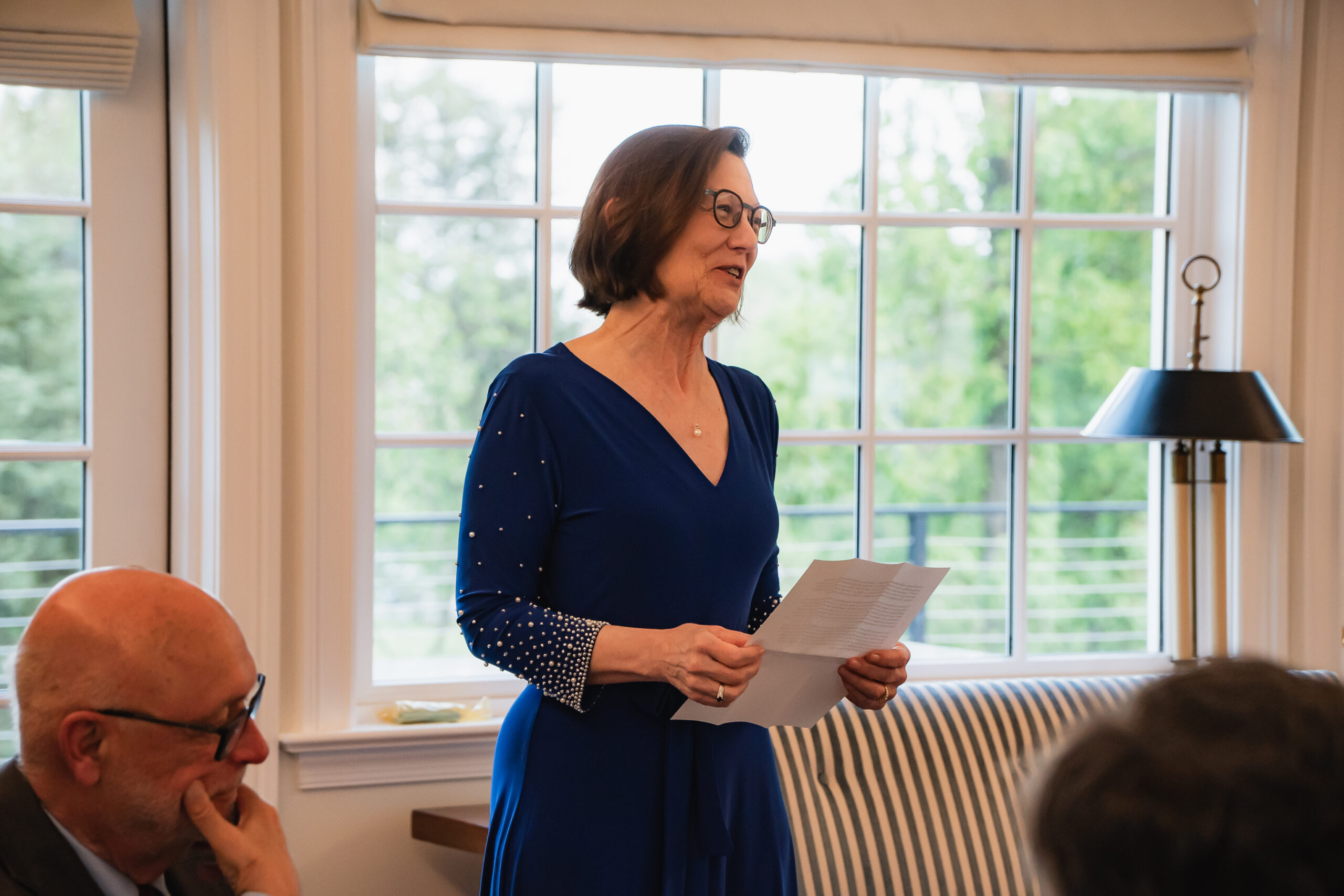
The Ministry of Mitzi Budde
Mitzi Budde, D.Min, Head Librarian and the Arthur Carl Lichtenberger Chair for Theological Research, retires after 33 years. The Rev. A. Katherine Grieb, Ph.D., ’83, reflects on the profound impact she has had on VTS.
Together we make The Episcopal Church stronger

Artist Leo Franklin Twiggs shared the inspiration behind two of his paintings during an Art Forum at the Historic Bicentenary.
Artist Leo Franklin Twiggs, Ed.D., remembers hearing stories as a child about his great-grandmother Sarah. “We were told that she was a slave girl, and the slave master took her to this church, and inside of this church she took care of his children. We had never been in the church and yet we were living only a half mile from it.”
Speaking at an Art Forum to mark Virginia Theological Seminary’s (VTS) Historic Bicentenary, Twiggs explained that the family were not able to go into the church because of segregation. “It had a big graveyard around it, if they saw you walking around in there, they would probably have arrested you,” he says.
He finally made it into the church in 2011, when he was attending a book signing across the street. He could see the door to the church was open, and one of the people at the book signing asked him if he wanted to go inside.
“She took me inside. She was giving me this lecture about what was in there. I wasn’t interested in her lecture, I was looking for that balcony and when I didn’t see it, I was disappointed. When I was walking out, I looked to the side and there were these roughhewn steps, and I said, ‘Where does this go?’ She said, ‘I don’t know.’ I walked up there, and there it was. It was a moment in my life that I still have not forgotten and I think I kind of staggered downstairs and back outside. I always wanted to go back, always wanted to take my brothers and all of that back in there but never could.”

Dr. Leo Twiggs meets guests at VTS’ Historic Bicentenary. Photo: Rashid Mahdi, Six Half Dozen
Twiggs describes his art as having deep roots in his experiences growing up in the South, and the racial tensions that continue to exist in America today. Among the many works for which he is known is a series of nine paintings, titled “Requiem for Mother Emanuel,” which commemorate the nine victims of the 2015 shooting at the Emanuel African Methodist Episcopal Church, in Charleston S.C.
Twiggs works primarily in batik, a traditional African method in which wax is applied to fabric, which is then dyed, creating varied colors and textures. He first encountered batik when he was at the Art Institute of Chicago after admiring one of the professor’s batik scarves. His interest in batik was rekindled when he was at New York University following a conversation with African American painter and muralist Hale Woodruff, who he describes as looking after him like a son.
“He said, ‘We African American visual artists ought to find a way to speak using some entities from our own language. We do it in our jazz, we do it in our blues, we do it in our spirituals. Why can’t we do it [in visual arts].’ I started looking around my neck of the woods. I had chickens, and there were hens there who were dominant. I had cows, and there were bulls there who were dominant. So, when I talked about dominance against the oppressed, I try to use these kinds of imageries,” Twiggs explained.
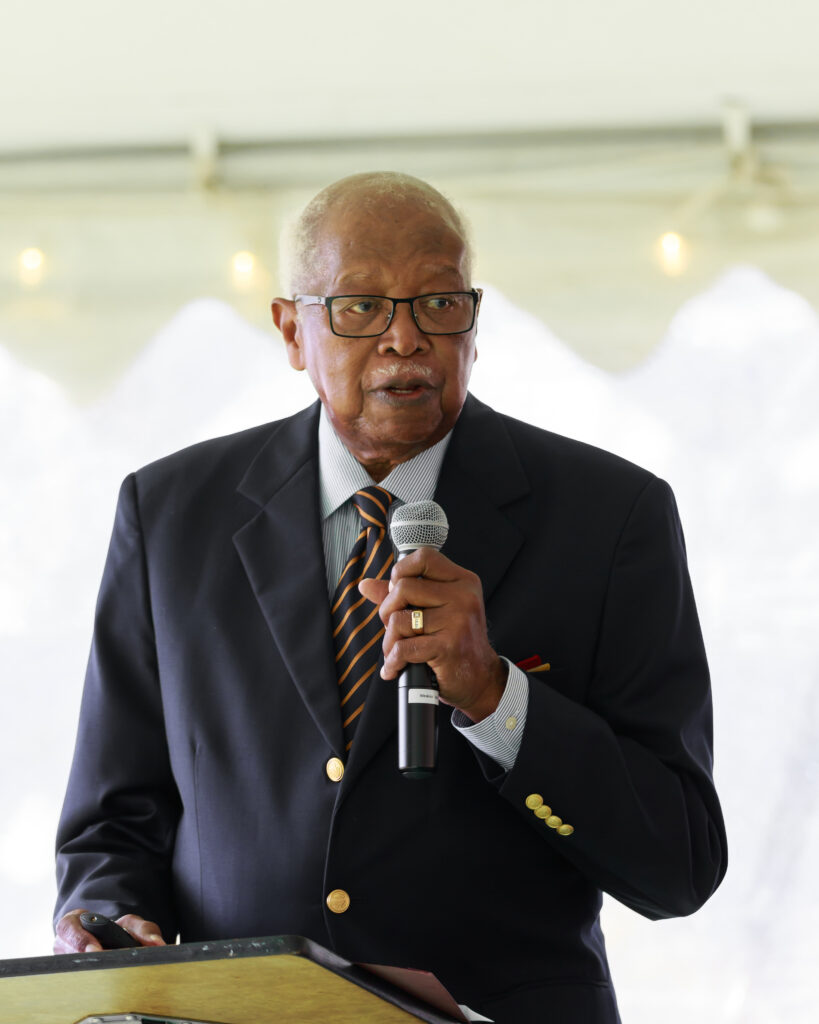
Dr. Leo Twiggs leads a forum on his art. Photo: Rashid Mahdi, Six Half Dozen
As he continued to develop his style, Twiggs turned to James Baldwin, one of his favorite authors. “Baldwin says the purpose of art is to lay bare the questions that have been hidden by the answers and for me that was really very important,” he says.
He started painting images of soldiers, and then the Confederate flag. “I found that I could express myself fully, simply by painting the flag itself. But it’s always a tattered flag. It’s not a flag that you can fly above a state house, not a flag that exists today. It’s not a flag from Korea made out of polyester. It’s an old flag. I thought of the flag as an heirloom as if you woke up one morning and went upstairs and looked at a trunk that your grandfather had and you pulled this thing out and it was falling apart.”

Dr. Leo Twiggs, VTS Dean the Rev. Ian Markham, P.D., and guests take a selfie. Photo: Rashid Mahdi, Six Half Dozen
Twiggs did a series of paintings based on the Confederate flag, which he called Commemoration. The cross on the flag reminded him of a railroad crossing. “I wanted to show that this crossing is much like the Confederate flag. I got the idea that the whole flag is something that we have to cross over, and not only do we have to cross over that, our life is a series of crossings: a loved one goes, a mother dies, we get sick and finally recover. It’s just a series of crossings that’s the way life is.”
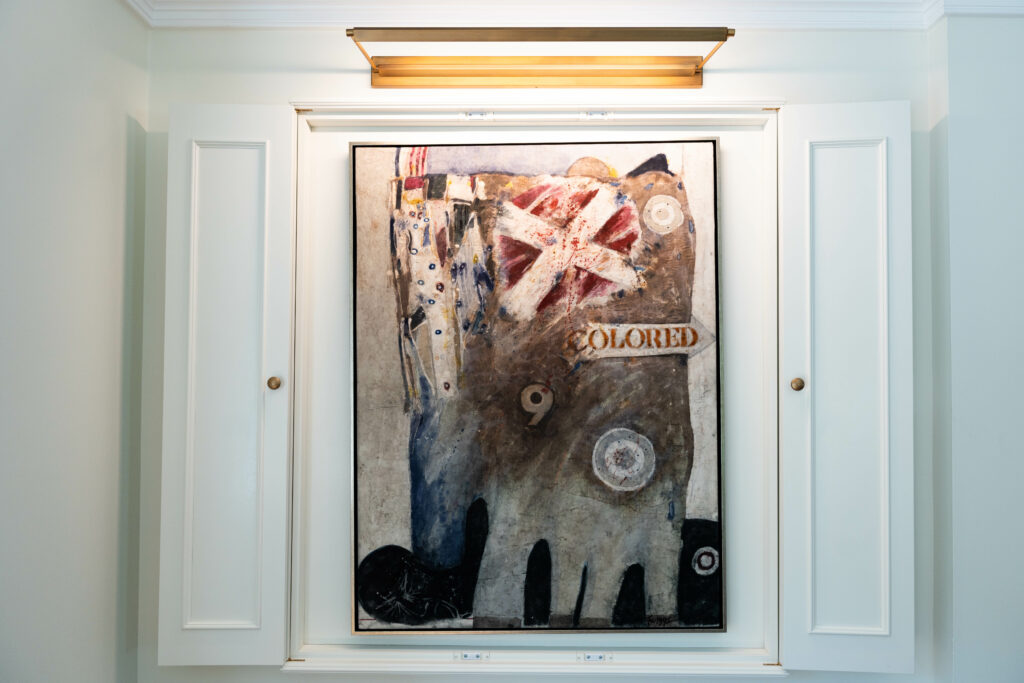
Dr. Twiggs’ painting capturing the death of George Floyd. Photo: Karina Carvalho
Targets also became an important image in his art. “I think that we African Americans, in many instances, we are targeted, we are targeted when they see us coming.” But he added that immediately after 9/11 everyone felt targeted. “There was this sinister feeling about it, you’d go in a store and all of a sudden there would be this loud sound and everybody started running for cover. So, I went from being targeted as an African American to America being targeted, and people will tell you that when America was targeted, we had some of the nicest kind of relationships that we ever had.”
VTS is privileged to have two works by Twiggs. The first painting captures the death of George Floyd in 2020, a tragedy which launched the national Black Lives Matter movement. “After George Floyd, it was so horrendous I knew I had to do something, and I started painting. I started looking at the reason that it happened, and I came up with ‘systemic’, it’s a part of the culture.” Twiggs says that the ‘X’ in this painting not only symbolizes the Confederate flag but also the spot on which someone has died. “X can mark the spot that somebody’s eliminated. X could be anything. I call that the elasticity of imagination.”
He explains that other themes in the painting include segregation, and being targeted, as well as the death of George Floyd. “It looks like a hand; it could be something else. It could be the people standing around letting that happen, because if you notice at the top of that you see the hat of maybe a policeman or a guard because they, the people, stood around while that was going on. Also … the knee on the neck of this man.”
Twiggs said after completing this work of “sin”, he felt so emotional he knew he had to do a more redemptive painting. This painting of “grace” was commissioned by VTS to mark its Historic Bicentenary, and has an Episcopal focus, featuring the Episcopal church dating back to the 1760s where his great-grandmother Sarah had looked after her master’s children, as a connection to himself, as well as Presiding Bishop Michael Curry.
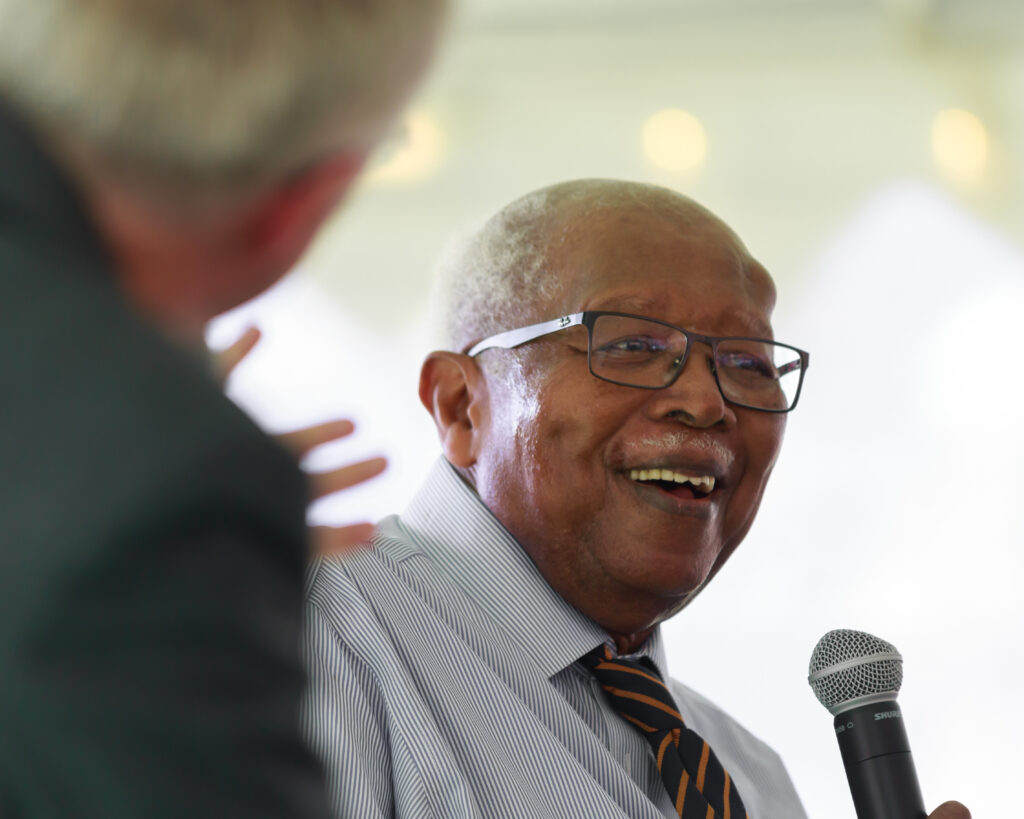
Dr. Twiggs takes questions. photo: Rashid Mahdi, Six Half Dozen
He said people often asked him why he did not give Bishop Curry eyes. “He wears glasses, so I just thought no eyes. In his work as a leader, he is led by faith not by sight, and so I wanted to give him that proper place,” he explained. “Then [Dean Markham] made the statement that our values matter, and I thought this is not a statement just for his church, this is not a statement just for the Seminary that for 200 years turned out clergy. This is a statement for all of us; this is a statement for America; this is a statement that we have values, that all men are created equal by the creator with certain inalienable rights, and those rights are life, liberty and the pursuit of happiness. Those are our values and in these times that we live those are so important.”
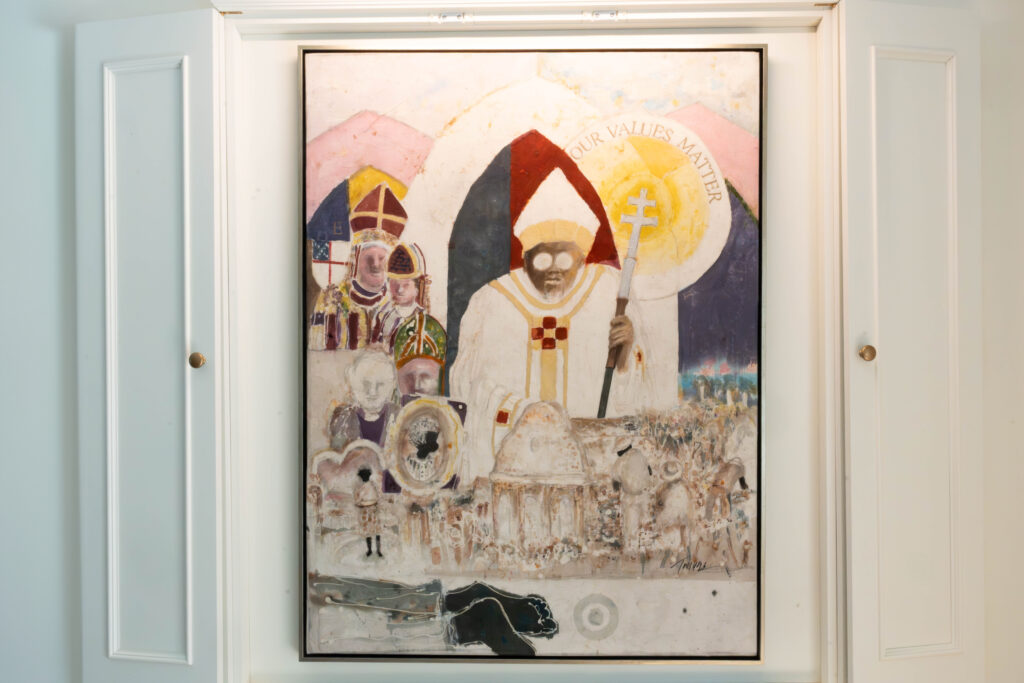
Dr. Twiggs’ painting of “grace” commissioned to mark VTS’ Historic Bicentenary. Photo: Karina Carvalho
Twiggs explained that the painting started with slaves, such as those from George Washington’s plantation Mount Vernon, going to the churches like his great-grandmother Sarah did. Talking the audience through the work, he said: “There was a connection there, but it gets sleepier down there because it’s like the past and about recording it. It gets colorful and then it comes on over to Bishop Curry, but I have also placed the death of George Floyd there, lest we forget.”
Twiggs remembers that when Dean Markham first commissioned the painting, he told him that the Historic Bicentenary was a time for VTS to look carefully at its past, a past that was marked by sin and grace. “I thought that was so candid that he would address sin that way, that he faced head on the issues of the Church and even of our country.” He added that he wrote the word “Amazing”, a word that he not only associates with that statement, but has also come to reflect an incident in his own life.
When VTS awarded him the Dean’s Cross for Servant Leadership, the Seminary’s highest honor, in July 2023, in recognition of his accomplishments as an artist exploring themes of American history and contemporary society, he met The Right Reverend Ruth Woodliff-Stanley, Bishop of South Carolina. “We talked and had a great time, and then I told her about Sarah. I said that I had a hard time getting into the church, that I could not take my brothers and sisters in the church.”
Twiggs said she asked him to write to her about it, so he sent her a copy of his book and the story about his great-grandmother. She later got back in touch to tell him that she had arranged for Sarah to be honored at a service in the church. “Let me tell you when I told my son, it was the most amazing moment in my life, and so that’s why I say a past marked by sin but more than that, a past marked by amazing grace.”

Mitzi Budde, D.Min, Head Librarian and the Arthur Carl Lichtenberger Chair for Theological Research, retires after 33 years. The Rev. A. Katherine Grieb, Ph.D., ’83, reflects on the profound impact she has had on VTS.
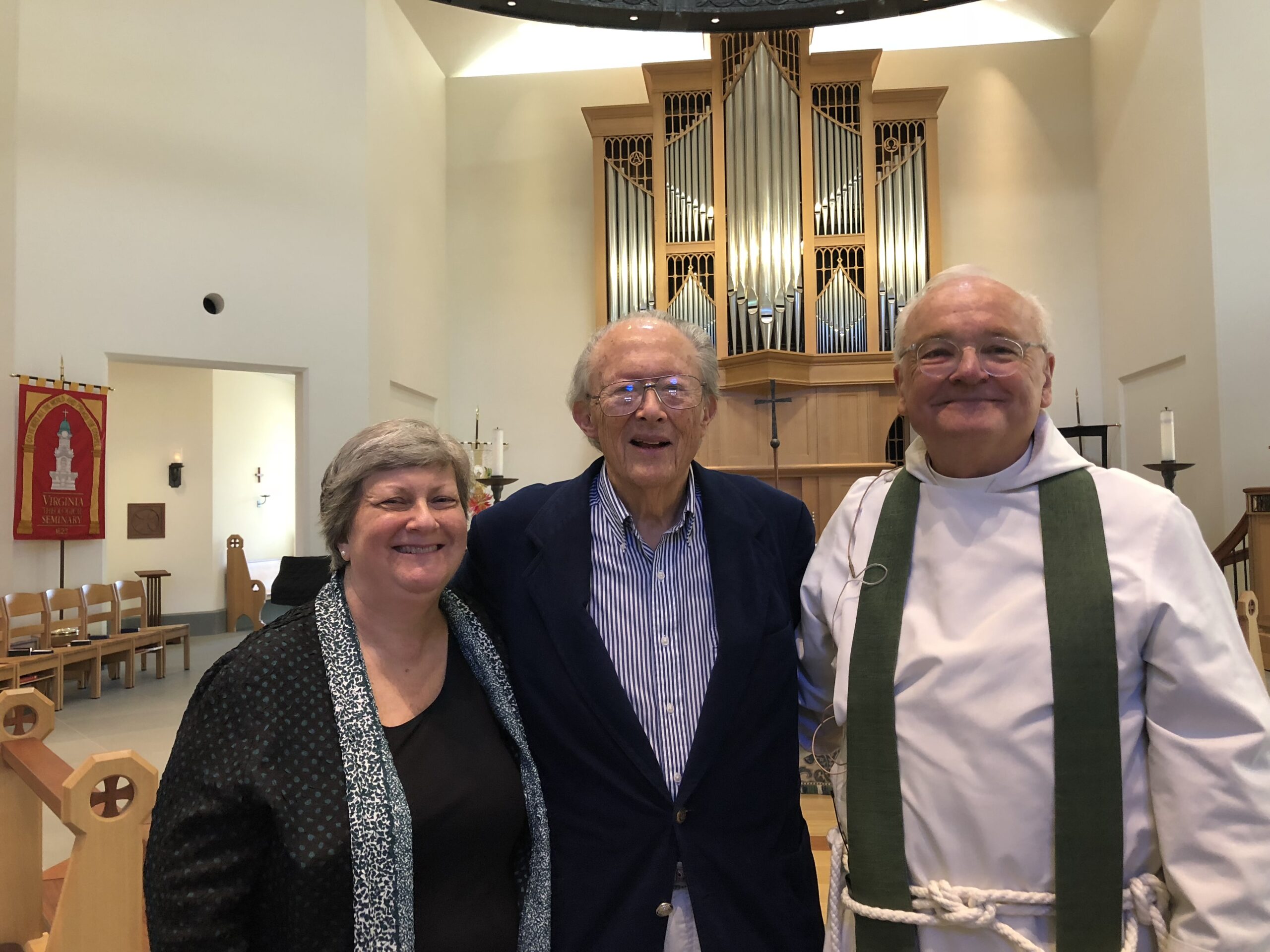
The Thomas Dix Bowers Preaching Fellowship Fund was established at Virginia Theological Seminary on May 6, 2008, by family and friends of the Rev. Dr. Thomas Dix Bowers, VTS ’56.
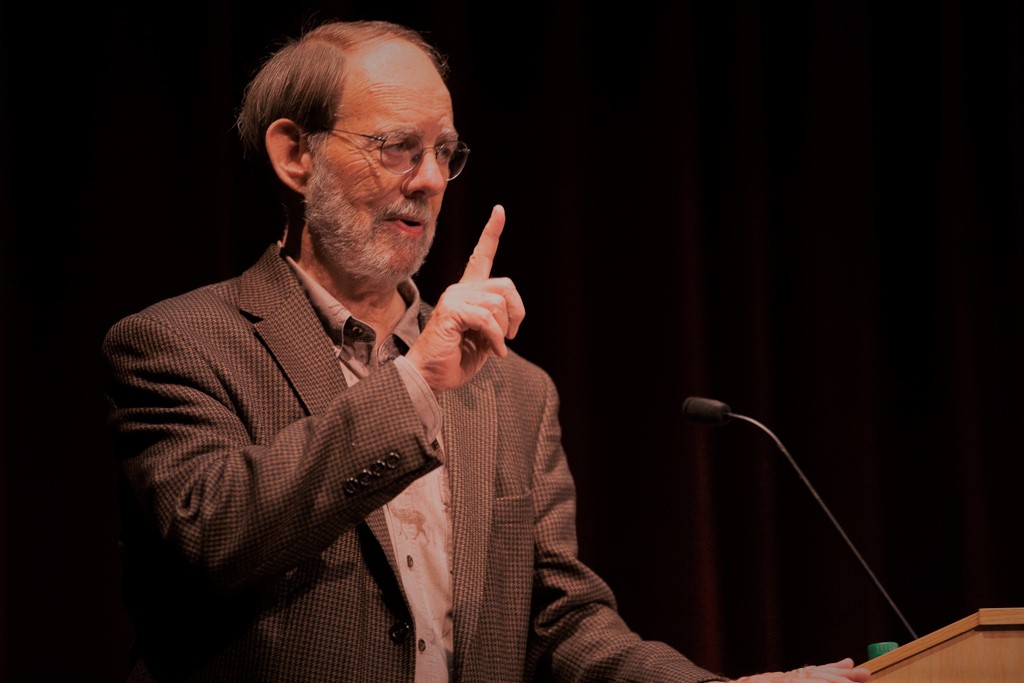
The Rev, Rode Molla, Ph.D., Assistant Professor, and the first Berryman Family Chair for Children’s Spirituality and Nurture at Virginia Theological Seminary, reflects on the legacy of the Rev. Jerome Berryman, D.Min.
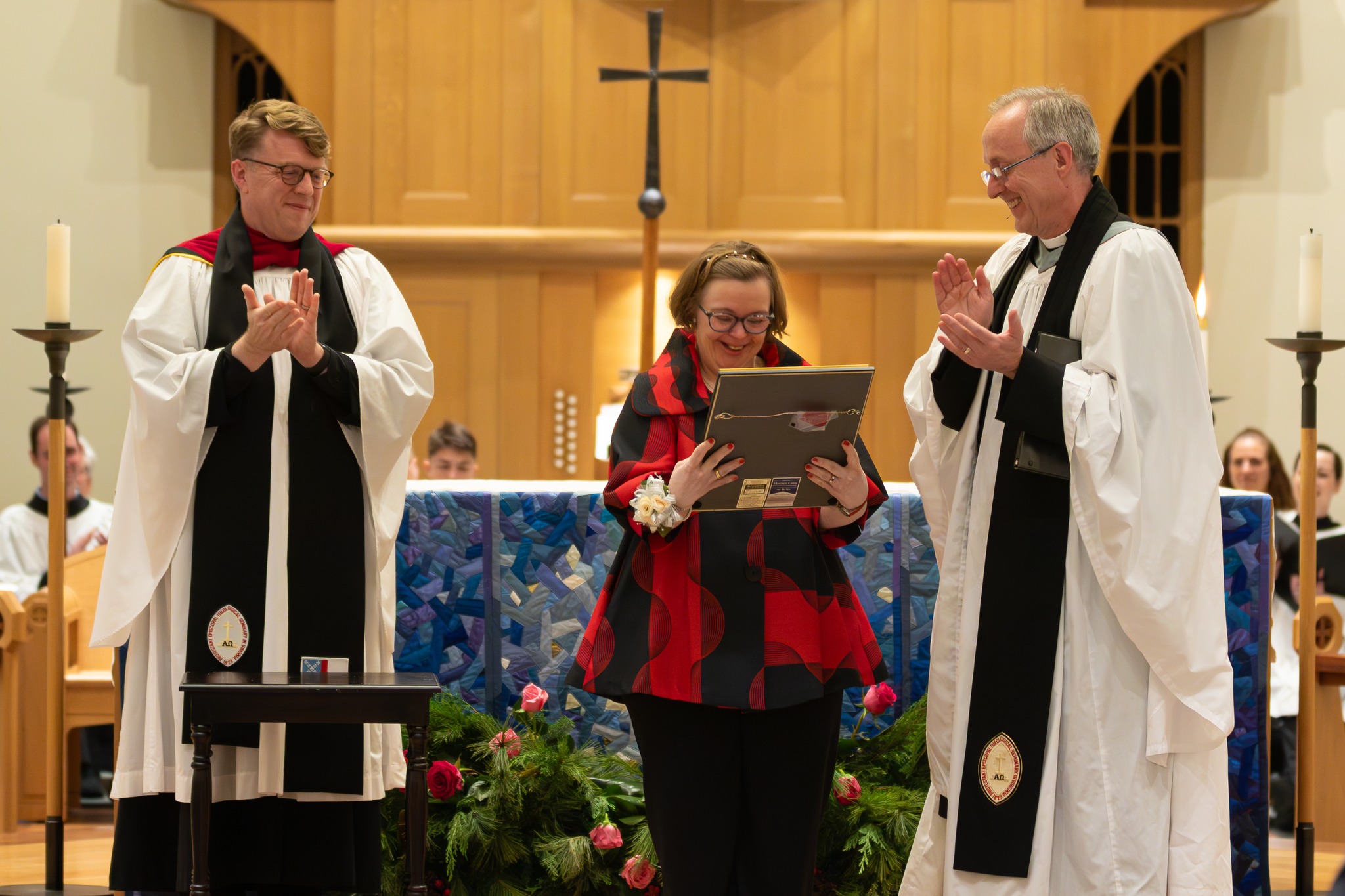
Virginia Theological Seminary was honored to confer the Dean’s Cross for Servant Leadership on Ellen Wofford Hawkins in recognition of her deep faith and ability to bring sunshine into the lives of others.